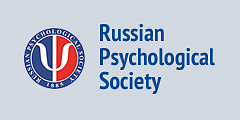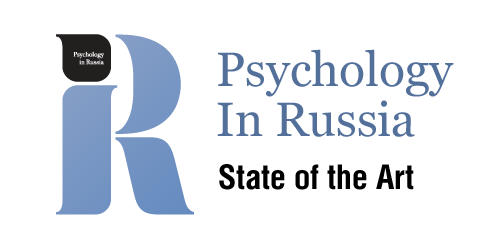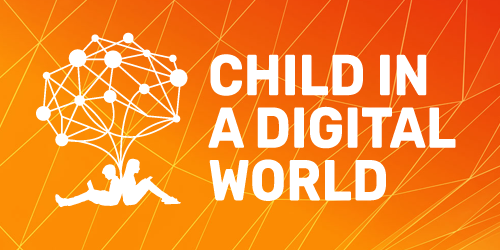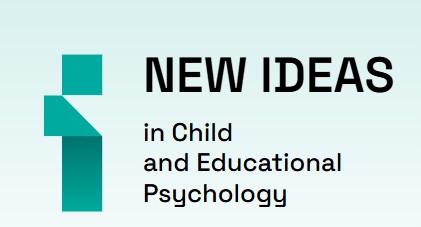Empirical studies
-
-
Relevance. Historically formed scientific traditions, approaches, concepts (including those called the “competency-based approach” – the K-approach) are formed in certain social conditions to solve certain social problems, beyond them they discover their limitations. Identification of the possibilities and limitations of the K-approach contributes to both its development and the refinement of the conditions under which its implementation will be more constructive and effective.
Methods: historical and theoretical analysis.
Results. “Open questions” of the problem are highlighted: inconsistencies in the judgments of specialists in listing the qualities that determine the success of the subject; the number of competencies “necessary and sufficient”; non-realization of holistic, integrated approach; the place of competencies in the structure of professionalism, their role in career success and professional longevity of people; the issue of “universal” / “specific competencies”; the question about the place of the phenomenon of “competence” and the K-approach in the system of psychological knowledge; the question about the validity of the methods and the measure of the predictive value of the estimates.
Conclusions. The interpretation of competencies and the K-approach proposed by specialists are unsatisfactory and poorly coordinated with each other. The K-approach and the established earlier approach of professionally important qualities (PVC-approach) are historically transient scientific concepts (falling into the scale of “small theories”). Both approaches have their own limitations as well as opportunities for development and integration with others. The PVC approach is characterized by an initial extremely broad statement of tasks; the K-approach – by the pragmatism of the original goals and objectives, empiricism in assessing the qualities of the subject. It is possible and necessary to search and find areas of their mutual complementarity, taking into account their ultimate goals and conditions of formation. Ignoring the merits and limitations of any scientific approach is not the best solution. The transition to an open discussion of all complex issues is in demand.
Keywords: competency-based approach; K-approach; professionally important qualities approach; PVC-approach; concepts; advantages; limitations; opportunities DOI: 10.11621/vsp.2020.04.05
-
-
-
Relevance. The ability of children with hearing impairments to recognize and determine their own conditions and those around them, to build adequate forecasts determines the success in socializing, in their interaction with others, both adults and peers, and in establishing relationships with them, which determines the relevance of the study.
The objective of the study is to determine the specifics of the relationship between the processes of identifying mental states, predicting and criteria for the success of interaction between children and other people measured by communication skills and emotional well-being / distress.
The following methods were used: "Emotional faces" (N.Y. Semago), "Ugadayka" (L.I. Peresleni and V.L. Podobed), "Methodology for determining the level of development of the communicative abilities of preschool children" (N.E. Veraksa), “Scale of emotional distress and atypical behavior” (A.M. Kazmin, N.A. Konovko, O.G. Salnikova, E.K. Tupitsina, E.V. Fedina).
Sample. The study involved 15 preschoolers with hearing impairment , 100 preschoolers without hearing impairment, 16 children of primary school age with hearing impairment, and 40 - without hearing impairment.
Results. It was found that the processes of predicting and identifying mental states are interrelated; the relationship is mediated by other variables (emotional well-being, communication skills), the structure of the relationship is deteriorating with age in children with and without hearing impairments.
The following conclusions were drawn: the structure of prognosis for children with normotypical development and hearing impairment has a general tendency in dynamics ( secondary variables fallout) and specific signs, manifested in the level of complexity and completeness of the structure; having a common foundation (subjective experience) identification and forecasting processes are interconnected only in preschool age; with time their relationship is mediated by additional variables (emotional well-being and communication skills); children with hearing impairments have a less complex structure of the relationship between predicting and identifying mental states against emotional well-being and communication skills.
Keywords: forecasting; identification of mental states; children with hearing impairments; emotional well-being; communication skills DOI: 10.11621/vsp.2020.03.14
-
-
-
Relevance. Underachieving schoolchildren are characterized by underdevelopment of higher mental functions (HMF) as compared to well-performing pupils. At the same time, there is a lack of explicit data on which dysfunctions are the most specific to underachievers.
It is unknown how much particular neurocognitive dysfunctions affect school performance and what are the possibilities to compensate for isolated defects.
Objectives. To identify the predictors of poor academic performance in school and to evaluate capabilities for children with certain neurocognitive dysfunctions for better progress at school.
Method. The neuropsychological examination was used to evaluate the characteristics of neurocognitive development. Four daily routine activities, fourteen HMF, and the overall level of neurocognitive development were assessed. The index of isolation-multiplicity of neurocognitive dysfunctions was calculated. To evaluate academic performance (average grade for all disciplines) interviews with pupils and their parents were conducted, school exercise-books and assignment books were thoroughly studied. The study involved 427 children (292 boys and 135 girls) aged from 6 to 17 years, (11.7 ± 3).
Results. The results of neuropsychological diagnostics explain 24% variance in the academic performance in school grades 1–4 and 18% variance in grades 5-11. Underachievement is predominantly related to the reduction in thinking, attention, audio-verbal memory, and overall level of neurocognitive development. Time orientation turns out to be more reduced than other everyday functions in underachievers. Certain mental functions in underperforming elementary school pupils can spontaneously improve through education. Isolated neurocognitive dysfunctions (up to 3) do not result in poor school performance.
Conclusion. Thinking, attention, and audio-verbal memory dysfunctions against the background of the low overall level of neurocognitive development are most specific to underachieving schoolchildren. Under-development of attention is the most significant predictor of poor school performance in 1–4 school grades, low level of thinking – in 5–11 grades. Isolated neurocognitive dysfunctions (up to 3) that can be compensated for have no negative impact on educational performance.
Keywords: developmental neuropsychology; learning difficulties; school disadaptation; minimal brain dysfunctions DOI: 10.11621/vsp.2020.03.13
-
-
-
Relevance. It can still be seen in contemporary studies that the difficulties of problem children are explored in an isolated manner, without any connection to the research on social-psychological practices of aid and correction.
The goal of the article is to integrate the approaches aimed at understanding a problem child with main organizational practices of medical, psychological and pedagogical help. The phenomenon of a problem child is being looked at in the context of developing a project-oriented approach in cultural-historical psychology.
Methods. The article uses the method of analyzing historically formed views on understanding a difficult child together with studying major views on organizing and structuring practical medical, psychological and educational help. The research was aimed at finding common features both in studies on different groups of problem children and that of different types of practices.
Results and conclusions. In the course of the historical-analytical study the authors highlighted main principles in structuring the rehabilitation of problem children and adolescents, showed the directions of the latest research. These principles are described as social structures and may serve as basis for designing and later constructing required social-psychological and therapeutically-developing environments for problem children. These social structures are actively involved in shaping the child’s mental organization. They are expressed in the external social relations which can be described and later organized in a particular way to help a child to overcome the existing difficulties. These social relations can be described on different levels: microsocial (interpersonal relations) and macrosocial (different social groups and stratas, subcultures, mass social processes in the society). It allows to integrate the existing research in a cross-disciplinary field. In such systematic studies, one language can be used to describe difficulties of problem children as well as therapeutic environments most suitable for their correction. Thus, it opens up a new possibility to elaborate on project-oriented approach constructed on the basis of cultural-historical psychology.
Keywords: problem child; children with disabilities; theurapeutic; psychological and pedagogical support practices for children and adolescents; cultural-historical psychology; socialization DOI: 10.11621/vsp.2020.03.12
-
-
-
The subject of this publication is the psychological analysis of the system of pedagogical correction (therapeutic pedagogy) developed by the famous Russian educator Vsevolod Petrovich Kashchenko, specialist in the field of education of difficult children. The author concentrates on some data of V.P. Kashchenko's scientific biography that are directly related to the opening of a unique medical and pedagogical institution in 1908 – a sanatorium-school for disabled children. It led to the emergence of a network of special institutions for children with developmental disabilities in the years to follow, especially in the Soviet period.
The article analyzes the terms used by V.P. Kashchenko: “defective child”, “difficult child”, “special childhood”. The concept of “difficult child” was introduced by V.P. Kashchenko to denote a group of children with marked behavioral disorders and character traits that disrupt their successful socialization, and in particular cause problems in learning the curriculum, and often lead to asocial behavior in school years. Subsequently, the meaning of this term changed, but now it is used in a sense close to how it was regarded by V.P. Kashchenko.
Methods. General characteristics of V.P. Kashchenko’s effective and practically proven system of education for children with behavioral disorders are given. An attempt is made to identify the psychological foundations of V.P. Kashchenko's pedagogical correction. The main principle is social conditioning of children's exclusivity, in particular difficult character traits, that are corrected by the complex system of methods developed by V.P. Kashchenko. The psychological analysis of V.P. Kashchenko's pedagogical system is based on the ideas of Russian scientists on the unity of education and development, the commonality of the laws of mental development of normal children and those with developmental disorders.
Results. It is concluded that it is reasonable to refer to V.P. Kashchenko’s scientific heritage as a source of psychological and pedagogical information in the field of raising children with developmental disorders.
The article is dedicated to V.P. Kashchenko 150th anniversary celebrated this year.
Keywords: pedagogical correction; medical (correctional) pedagogy; defective child; difficult child; defectology; special psychology; V.P. Kashchenko; L.S. Vygotsky DOI: 10.11621/vsp.2020.03.11
-
-
-
Relevance. The increase of children interest in entertainment TV programs, mobile applications and video games available on the internet causes a significant decrease in their physical activity: children get used to a sedentary or lying down lifestyle. The research problem lies in the contradiction that arises due tounderstanding of the positive effect of physical activity on the development of the regulatory functions of a preschooler, and a significant decrease in this activity in the digital conditions of the modern educational environment.The relevance and prospects of the study of the relationship between regulatory functions and physical activity of preschool children in new digital environment are not yet fully realized.
The objective of the paper is to review the studies by foreign scientists in order to identify and describe relevant indicators of physical activity in preschool children interrelated with the main components of regulatory functions (inhibitory control, working memory, cognitive flexibility).
Method. A theoretical review of research papers published over the past ten years (2010 –2020) on the subject of relationship of various physical activity indicators and regulatory functions in preschool children.
Results. The paper provides a comparative analysis of studies conducted by foreign authors. It allows to reveal basic indicators of physical activity in children which are essential for the development of regulatory functions (sufficiency of physical activity; age-related appropriateness; the nature of physical activity; the form of physical activity arrangement), and particular indicators (the relationship of physical activity and regulatory functions in various sports, duration and intensity of physical activity, the availability of software for the development of physical activity in preschool children) as well.
Conclusions. The review showed that the majority of the authors emphasized the significant role of basic physical activity indicators and their influence on regulatory functions. Aerobic exercises are the most effective in the development of regulatory functions in preschool children. Particular indicators are selected from the studies of the development of regulatory functions in specific sports (football, karate, yoga, mini-trampoline), and additional research on the duration and intensity of physical activity is needed.
Keywords: preschool age; physical development; physical activity; regulatory functions; working memory; inhibitory control; cognitive flexibility DOI: 10.11621/vsp.2020.03.10
-
-
-
Relevance. Research in the field of educational psychology is impossible without reliable and effective psycho-diagnostics methods for assessing students' motivational, emotional, cognitive, and behavioral characteristics.
Objective. The article describes results of adaptation and validation of the Russian version of “Multidimensional School Engagement Scale” (Wang et al., 2019). School engagement is seen as the sustainable, purposeful, active participation of students in their school life manifested at the behavioral, emotional, cognitive, and social levels.
Methods. A psychometric assessment of the method was carried out on a sample of the 6–11 grade students of Russian secondary schools (N = 687). In the process of adapting the questionnaire for Russian-speaking students, a direct and reverse translation of the questions was carried out and the factor structure of the questionnaire was investigated using confirmatory factor analysis, factor validity of the model invariance depending on gender, scales’ internal consistency and external validity was also checked.
Results. The results of confirmatory factor analysis showed that original bi-factor structure of the questionnaire was preserved identifying two global factors: engagement and disengagement (χ2 (563) = 1252.66; p = 0.00; CFI = 0.938; GFI = .907; RMSEA = 0.042). The scales of the questionnaire have a sufficiently high reliability according to the internal consistency of their points (Alpha Cronbach from 0.63 to 0.90). The number of questions included in the Russian version corresponds to the original version of the questionnaire.
Conclusions. The study results confirmed the relevancy of considering engagement a multidimensional construct including an assessment of behavioral, emotional, cognitive, and social aspects. The questionnaire can be used on the samples of students in grades 5 to 11. The article contains the text of the questionnaire, instructions and key.
Keywords: school engagement; motivation; confirmatory factor analysis; validity DOI: 10.11621/vsp.2020.03.09
-
-
-
Relevance. There is growing interest in the market for educational applications in Russia. A significant number of these are aimed at preschoolers. Although much is known about the key features of preschoolers learning ( due to the cultural-historical approach as well ), there is still little research analyzing whether these features are taken into account in the design and methodology of mobile applications available on the market.
Objective. To analyze math apps for preschoolers from the standpoint of cultural-historical theory.
Design. We went to Google Play and AppStore with the query “mathematics for preschoolers” and selected four apps that are most popular among users and recommended by experts. We analyzed them according to the following criteria: (1) adult engagement, (2) quality of the child’s interactions with the application content, (3) types of content, (4) forms of material presentation and the correspondence of the method of number concept formation to the preschool age specifics, (5) the quality of mathematical content, that ensures the principle of continuity with the primary school curriculum.
Results. None of the apps was based on developmental learning methodology, and none used opportunities for involving an adult in a dialogue and joint activities with a child. Not all the apps considered the characteristics of the age group in their design of content and the child's interactions with the app. Only one of the apps provides continuity with the primary school curriculum.
Conclusions. Scientific knowledge and practical achievements in the field of mathematical education for preschoolers are not always reflected even in the most popular programs. Our analysis allows to draw the attention of parents, teachers, and developers to important design elements that could make an app really educational for preschool children.
Keywords: math apps; preschool education; elementary mathematical concepts; interaction with the app DOI: 10.11621/vsp.2020.03.08
-
-
-
Relevance. The spread of deviant behavior and violations of moral norms by adolescents increases in the transitive informational society with high variability of socialization forms and moral standards. These violations are declaratively accepted by teenagers while they maintain a positive moral self-esteem. The implementation of behavior that goes beyond the boundaries of accepted moral standards indicates a violation of moral self-regulation associated with a special attitude to one’s act according to the type of moral alienation. A. Bandura proposed a model to justify immoral behavior where moral disengagement mechanisms are highlighted, providing support for positive self-esteem and self-respect. The selected moral disengagement mechanisms are actively used in adolescents to explain their own and other people's immoral behavior.
Objective: to determine the characteristics of the preferences of moral disengagement mechanisms in adolescence and youth. Research goals: analysis of preferences of the moral disengagement mechanisms, age dynamics analysis of moral disengagement mechanisms, gender differences analysis of preferences of the moral disengagement mechanisms, analysis of the psychometric parameters of the questionnaire of moral disengagement mechanisms.
The following methods were used in the study: the method of moral disengagement mechanisms by S. Moore in the Russian-language adaptation by Ledova Ya.A. and colleagues, the methodology “Justice and care” (author S.V. Molchanov).
Participants. The study involved 551 adolescents aged 14 to 17 where 346 (62.8%) were boys and 205 (37.2%) were girls. It also surveyed 230 senior students of universities.
The following results were obtained: the characteristics of preferences were analyzed and a hierarchy of mechanisms of moral disengagement mechanisms was identified; various groups were distinguished by the nature of preferences of moral disengagement mechanisms; age dynamics of preferences of moral disengagement mechanisms were determined ;gender differences in the preferences of moral disengagement mechanisms are highlighted; the psychometric parameters of the used methodology were analyzed; the possibilities of its use was demonstrated.
Keywords: moral disengagement mechanisms; moral development; personal development; adolescence DOI: 10.11621/vsp.2020.03.07
-
-
-
Relevance. Adolescence is an important stage in human life. It offers a lot of possibilities for personal development, but it also presents serious challenges, such as development of autonomy, the search for individuality. Parent-child relationships are generally considered a factor of the development of adolescent’s autonomy. Family psychology identifies adolescence as basis for a separate stage in the family life cycle. In this regard, it seems important to investigate the processes of separation and development of the autonomy of adolescents not only in parent-child relations, but in a wider family context.
Objective. The goal of the research is to study the family factors of autonomy and separation processes development in adolescence.
Method and participants. 51 adolescents in age from 13 to 18 years took part in the study. The following methods were used: questionnaires on autonomy and separation processes, family and child-parent relations, “Family Sociogram”, the incomplete sentences method.
Main results. The main content of the ideas about independence and autonomy in adolescents is shown: adolescents determine their autonomy primarily through the behavioral aspect and alienation. Emotional differentiation goes difficult, and adolescents are often susceptible to emotional influence in relationships with significant people. Fear of losing sovereignty is negatively associated with family cohesion, expressiveness, and independence of family members. Neurotic denial of dependence on others is negatively associated with family cohesion, independence of family members, and transparency of family rules. Lack of acceptance of the adolescent, excessive emotional distancing and lack of consent and cooperation in the family is negatively connected with autonomy development and separation of adolescents.
Conclusions. It is necessary to consider the development of autonomy and separation processes in adolescence in the context of family relations. Negative family factors are connected with separation difficulties and lack of autonomy in adolescence.
Keywords: autonomy development in adolescence; separation-individuation in adolescence; family relations; parent-child relations of adolescents DOI: 10.11621/vsp.2020.03.06
-
-
-
Relevance. In the correctional facilities the staff plays a special role in the life of juvenile offenders serving sentences and isolated from the society. It is not only the rehabilitation process in the juvenile correctional facility but also the success of resocialization after serving the sentence that is determined by their actions and the attitude towards the juvenile convicts.
Objective. The aim of the study was to study exactly which indicators of mental health and emotional state of juvenile convicts are associated with perceived and received socio-psychological support from psychologists and caregivers of the juvenile correctional facility in comparison with support from other sources.
Methods and participants. The study involved 657 adolescents serving sentences in nine juvenile correctional facilities, aged 14 to 19 years (564 boys and 93 girls).The study used the Multidimensional Scale of Perceived Social Support (MSPSS), an item specifically developed for identifying the frequency of seeking help from various categories of people present in respondents' lives; the Depression Anxiety Stress Scales - DASS-21); the Positive and Negative Affect Schedule (PANAS); and the Scale of Positive and Negative Experience (SPANE).
Results. Differences were identified in the relationship between perceived social support from different sources and the frequency of seeking help for different categories with indicators of mental health and emotional state of young convicts. The study also identified the impact of different support sources on anxiety, stress, and the strength of positive and negative emotions. The study emphasizes the special role of caregivers and psychologists compared to other categories of stuff in predicting the levels of depression,
Conclusions. The perceived social support from the staff and the frequency of juvenile convicts asking psychologists and caregivers for help have a significant impact on mental health indicators and the emotional state of juvenile offenders. Peers and friends have the least impact on the mental health and emotional state of incarcerated youth, as opposed to free adolescents. On the contrary, “significant adults” represented by staff of correctional camps (educators and psychologists) make a significant contribution to reducing mental health disorders and improving the emotional state of offenders. Perceived social support from “significant others” helps reduce stress. Asking educators for help can be considered a predictor of lower levels of depression, anxiety, and stress in juvenile convicts. In turn, the level of positive emotions is mostly determined by seeking help from a psychologist.
Keywords: juvenile convicts; social and psychological support; mental health; emotional state; staff of juvenile correctional facilities DOI: 10.11621/vsp.2020.03.05
-
-
-
Relevance. The article is devoted to the study of adolescents who do not have evaluative and/or prescribed respect for their parents as well as presents factors associated with disrespectful attitude to their parents: gender, family composition, financial security of the family, social status of the parent, features of upbringing and child-parent relationships. The disrespect for parents has not yet been studied in detail.
Objective. Identification of factors contributing to disrespectful attitude of adolescents towards their parents.
Sample. In total, 294 people participated in the study: 218 adolescents aged 12 to 17 years; 76 parents of these adolescents aged 33 to 48 years.
Methods: Adolescents were offered the author's questionnaire “Respect for Parents”, the ADOR method – “Adolescents about Parents”, Parents answered questions from “Analysis of Family Relationships” (AFR).
Results. Four groups of adolescents were identified based on cluster analysis of “Respect for parents” method: respectful, disrespectful, evaluatively respectful, and prescriptively respectful. It was found that boys do not respect their parents more often than girls. Adolescents from single-parent families are also more likely to disrespect their parents. The gender of the parent is not related to respect indicators. The social success of the parent and the financial security of the family are important factors associated with the respect of adolescents for their parents. The relationship of a large number of features of parenting and child-parent relations (both in the perception of adolescents – ADOR method and their parents – AFR method) with indicators of respect for parents among adolescents was analyzed.
Conclusion. Adolescents may not have evaluative respect (conscious deference, the result of evaluating a person) or prescribed respect (the result of assimilating social norms of honoring elders) for their parents, or they may not fully respect them. Adolescents do not respect parents who lack psychological acceptance of children, lack parental feelings, and are hostile to them. Also, adolescents do not respect parents who show dominant hyperprotection
Keywords: respect for parents; disrespect for parents; adolescents; single-parent families; child-parent relationships DOI: 10.11621/vsp.2020.03.04
-
-
-
Background. This article considers the prediction ability (anticipation of future events) in preschool children with hearing impairment. The ability to anticipate the results of their interaction with the surrounding social world is by no means unimportant in the social adaptation of children with hearing impairment. Prediction in preschool children with hearing impairment is a rather poorly studied topic. There are studies about particular types of anticipation, such as emotional anticipation. Based on analysis of previous studies, a detailed study of the structural and functional characteristics of the prognostic ability of children with hearing impairment compared with children with neurotypical development is significant.
Objective. To learn about the ability of hearing-impaired preschoolers to anticipate future situations.
Design. The empirical study involved 50 children aged 5–7 years with hearing impairment and without developmental disabilities, attending preschool educational institutions of the Republic of Tatarstan. The following methods were used: “Ugadaika” [“Guessing Game”] (L.I. Peresleni, V.L. Podobed) and the authors' methodology “Prognostic Stories”, developed by teachers at Kazan Federal University.
Results. In children with hearing impairment, we identified ineffective methods of carrying out predictive activities, irrational forecasting strategies, forecasting difficulties in certain areas of relationships and activities, as well as problems of mastering the rules in a normative situation.
Conclusion. The study confirmed the importance of external regulation in the social life of a child with a hearing impairment, which helps the children to predict more successfully in organized activities than in free ones. The most developed relationships in children with hearing impairment are in the child – parent domain. In their own forecasting, children with hearing impairment are more characterized by a passive position; in most situations, the children pointed to other participants, most often adults, as the subjects of future events.
Keywords: prediction; hearing impairment; preschool age DOI: 10.11621/vsp.2020.02.08
-
-
-
Background. Sex differences in the study of the cognitive domain are significant for the interpretation of data in different fields; however, the nature of the differences remains an open question. This article presents the results of a study of gender differences in cognitive performance in children of preschool and primary school age.
Objective. To study gender differences in the cognitive performance in children of preschool and primary school age.
Methods. The sample consisted of students from kindergartens and schools in Moscow (N = 301). Two versions of the Wechsler Test were used as the main instruments for diagnosing cognitive abilities: the Wechsler test for preschoolers (WPPSI-IV) and the Wechsler children's test (WISC-V). Analysis of the results used Student's t-test and a measure of the effect size (Cohen's d).
Results. The effect of gender on cognitive performance varies significantly depending on the age of the children. The most pronounced gender differences were identified among children of early preschool age: girls received significantly higher scores on the index of verbal comprehension and the general intelligence scale. In the children of middle and older preschool age, there were no statistically significant gender differences for any evaluated parameter. In the younger schoolchildren, differences between boys and girls were found in the speed of information processing and the vocabulary subtest. Girls were ahead of boys in completing tasks included in the information-processing speed index, while boys were better at completing the vocabulary subtest.
Keywords: intelligence; gender differences; preschoolers; primary school children DOI: 10.11621/vsp.2020.02.07
-
-
-
Background. The study explores two main processes of perception of facial expression: analytical (perception based on individual facial features) and holistic (holistic and non-additive perception of all features). The relative contribution of each process to facial expression recognition is still an open question.
Objective. To identify the role of holistic and analytical mechanisms in the process of facial expression recognition.
Methods. A method was developed and tested for studying analytical and holistic processes in the task of evaluating subjective differences of expressions, using composite and inverted facial images. A distinctive feature of the work is the use of a multi-dimensional scaling method, by which a judgment of the contribution of holistic and analytical processes to the perception of facial expressions is based on the analysis of the subjective space of the similarity of expressions obtained when presenting upright and inverted faces.
Results. It was shown, first, that when perceiving upright faces, a characteristic clustering of expressions is observed in the subjective space of similarities of expression, which we interpret as a predominance of holistic processes; second, by inversion of the face, there is a change in the spatial configuration of expressions that may reflect a strengthening of analytical processes; in general, the method of multidimensional scaling has proven its effectiveness in solving the problem of the relation between holistic and analytical processes in recognition of facial expressions.
Conclusion. The analysis of subjective spaces of the similarity of emotional faces is productive for the study of the ratio of analytical and holistic processes in the recognition of facial expressions.
Keywords: facial expression recognition; basic and composite facial expressions; analytical and holistic processes; inversion effect; multi-dimensional scaling; diagnostic features DOI: 10.11621/vsp.2020.02.06
-
-
-
Relevance. The term “family pain” is used in family psychotherapy to refer to the emotional state of dysfunctional family members. Research on this phenomenon in dysfunctional alcoholic families can expand the understanding of the family system and allow us to formulate the goals of psychotherapy with such families.
Objective. To investigate the “family pain” experienced by adult children of alcoholics.
Methods. The sample consisted of 52 people who were in a recovery program for adult children of alcoholics (ACA), and 50 controls. We implemented a phenomenological analysis of ACA groups, a content analysis of images of “family pain”, and factor analysis of the characteristics of “family pain”.
Results. The study showed significant differences between the images of “family pain” experienced by adults who were raised and still live in alcoholic families, by those whose parents were alcoholics and had died by the time of the survey, and by those whose parents were not alcoholics. People who live with their alcoholic parents describe “family pain” as a familiar, long process with effects on the whole family. The experience of “family pain” includes anger, shame, and self-pity. People whose parents were alcoholics and have died describe “family pain” as a feeling of guilt towards their parents and a process of experiencing their parents’ death. The control group had difficulty describing “family pain”, or described it as a process of experiencing their parents’ death.
Conclusions. Representations of “family pain” are associated with the subjective meaning of family dysfunction for the participant and the experience of negative emotions in the family.
Keywords: Twelve-Step rehabilitation program; alcoholism; dysfunctional family; family pain; guilt DOI: 10.11621/vsp.2020.02.05
-
-
-
Relevance. The spread of coronavirus infection is accompanied by the dissemination of information messages in the form of radical beliefsaffecting people’s behaviour.
The aim of the study was to reveal the relationship between beliefs about coronavirus and its treatment, magical thinking, anxiety and the protective behaviour against to the pandemic. Methods. 402 adults aged 18–64 years old filled checklist including beliefs about causes, manifestations, consequences and control of the pandemic, Illness and Treatment Locus of Control Scale, Treatment Self-Efficacy Scale, Magical Ideation Scale as well as scales measuring anxiety and protective behaviour in pandemic and monitoringof information about coronavirus.
Results. Factor analysis revealed three groups of radical beliefs about coronavirus: negligence as the cause of the occurrence and spread of coronavirus, a particular meaning of morbidity and negative consequences of the pandemic.
Conclusion. Belief inthe negligence as a cause of coronavirus was more typical for people with an intrinsic locus of causes of the causes of illness but extrinsic locus of control of treatment and for those who were prone to protective behaviour in the pandemic. Belief about the particular meaning of coronavirus was associated with the magical thinking, the intrinsic locus of control of the causes of illness, less anxiety about infection and poorer compliance with self-isolation. Radical beliefs about the consequences of the pandemic were related to more frequent monitoring of the information about the pandemic, extrinsic locus of control of treatment but intrinsic locus of control of causes of illness and a pronounced anxiety regarding future negative consequences of the pandemic.
Keywords: pandemic; infodemic; radical attitudes; perceptions of coronavirus; magical thinking; protective behaviour DOI: 10.11621/vsp.2020.02.04
-
-
-
We present the results of an empirical study of the relationship between self-assessment of creative abilities, originality of creativity (verbal and social) and values. The relevance of the research is related to the demand for creativity as an important competence in the labor market. The ambiguity of the relationship between different types of creativity and self-assessment of creativity, as well as the discrepancy between the results of diagnostics of creative potential using various methods, actualizes the problem of realizing creative potential.
The aim of the work was to study the relationship between different types of creativity, self-assessment of creativity and values, as well as to identify the ratio of creativity indicators diagnosed using the Real Word Divergent Task (RWDT) method and tasks for verbal creativity.
The study involved adolescents aged 15–16 years (N = 50; 26 – men) – students of one of Moscow school. The following methods were used: “Self-assessment of creative abilities” (E. Tunik), tasks on verbal creativity and creativity in social interaction of positive and negative connotations of RWDT, Portrait value questionnaire of Sh. Schwartz.
According to the results, originality is higher in tasks for verbal creativity compared to situations in social interaction; originality in situations of lies and prosocial situations in social interaction significantly correlate; there is no correlation between self-esteem of imagination and creativity indicators measured using the RWDT method and tasks for verbal creativity; self-esteem of creative abilities has a positive relationship with the highest value of “Openness to change”; the predictor of self-esteem of imagination is the value of “Independence of thought”. The results confirmed the hypotheses about specificity of creativity, about the absence of a link between creativity measured as self-report and objective methods; about the presence of a direct link between the highest values of “Openness to change” and the components of creativity measured by self-report, and did not confirm assumption about the absence of a direct link between originality in prosocial situations and situations with negative connotations.
Conclusions are made that 1) creativity is specific in various areas, 2) creativity in situations of lies and prosocial situations in social interaction is a single construct; 3) self-esteem of imagination is not associated with divergent thinking, measured using the RWDT method and tasks for verbal creativity; 4) high self-esteem of imagination is mediated by the motivational goal of thinking creatively, having original ideas, learning new things and phenomena.
Keywords: creativity; self-assessment of creativity; imagination; values; diagnostics of creativity; Real Word Divergent Task DOI: 10.11621/vsp.2020.02.03
-
-
-
Relevance. The study of the self-motion (“vection”) illusion is an important task for modern psychology and neuroscience due to the widespread use of virtual reality systems. The study of psychophysiological mechanisms of this phenomenon has particular importance as an example of intersensory interactions.
Objective. To study the psychophysiological mechanisms of the self-motion illusion in a virtual reality system using electroencephalography.
Methodology. Eleven healthy subjects took part in the experiment. The stimulation was a virtual opto-kinetic drum that rotated clockwise and counterclockwise around a vertical axis with angular velocities of 30, 45 and 60 angular deg/s. The duration of each rotation was 60 seconds. The subjects were presented with 18 rotations; there was a series with instructions for free viewing of the visual scene (3 speeds × 2 directions × 2 repetitions) and a series with instructions to fix the gaze in the center of the virtual scene (3 speeds ×2 directions × 1 repetition). After each rotation, the subjects filled out the “Simulator Sickness Questionnaire” and evaluated the intensity of the illusion on a 10-point scale. Stimulation was presented in the HTC Vive virtual reality helmet. Electroencephalogram recording during the observation of cylinder rotations was performed using Mitsar-EEG-10/70-201.
Results. Significant differences were found in the intensity of the illusion, the total score on the questionnaire, and the power of the alpha rhythm in the parietal zones, depending on the speed of rotation. The higher the rotational speed, the greater the values of these dependent variables. Large values for beta-rhythm power in the occipital areas were found in the series with fixed eyes, in the subjects with high values for the intensity of the illusion.
Conclusions. Differences were shown in the bioelectrical activity of the brain during the experience of the self-motion illusion, related to mechanisms of visual-vestibular integration and greater attention to the performance of the motor task of gaze fixation.
Keywords: vection; virtual reality; electroencephalogram; eye movements DOI: 10.11621/vsp.2020.02.02
-
-
-
Background. This study examined a set of personality traits related to self-control or willpower, (WP), and how self-ratings of these self-control traits are influenced by the cognitive constructs of action (versus state) orientation and meaningfulness.
Design. The subjects were 943 university students, aged 17–29 (M = 19.5 years), who volunteered to complete J. Kuhl's (1996) Action-State Orientation (ASO) scale, a Russian adaptation of the Purpose In Life test (PIL) as a measure of meaningfulness and sense-making capacity, and self-ratings of self-control traits, such as “persistence”, “decisiveness”, and “self-discipline” that produced an aggregate measure of WP and four willpower factors reflecting (1) emotional regulation, (2) commitment to action, (3) energy, and (4) execution.
Results. State-oriented ineffective sense-makers (those who scored low on both ASO and PIL) rated themselves the lowest on WP. Conversely, action-oriented effective sense-makers (high scorers on both ASO and PIL) produced the highest WP self-ratings. Mediator-modelling regression analyses showed ASO and PIL to be predictive of self-rated WP – both independently, and by mediating each other’s influence on aggregate WP ratings. However, the predictive power of PIL was substantially higher than that of ASO, and the overall pattern of prediction varied across the four willpower sub-factors.
Conclusion. Our results confirm the role of sense-making as a key mechanism of volitional regulaiton, and its interactions with cognitive resources such as action-orientation dispositions captured by ASO.Keywords: willpower; self-control traits; self-rating; meaningfulness; action-state orientation; mediation modelling DOI: 10.11621/vsp.2020.02.01
-









